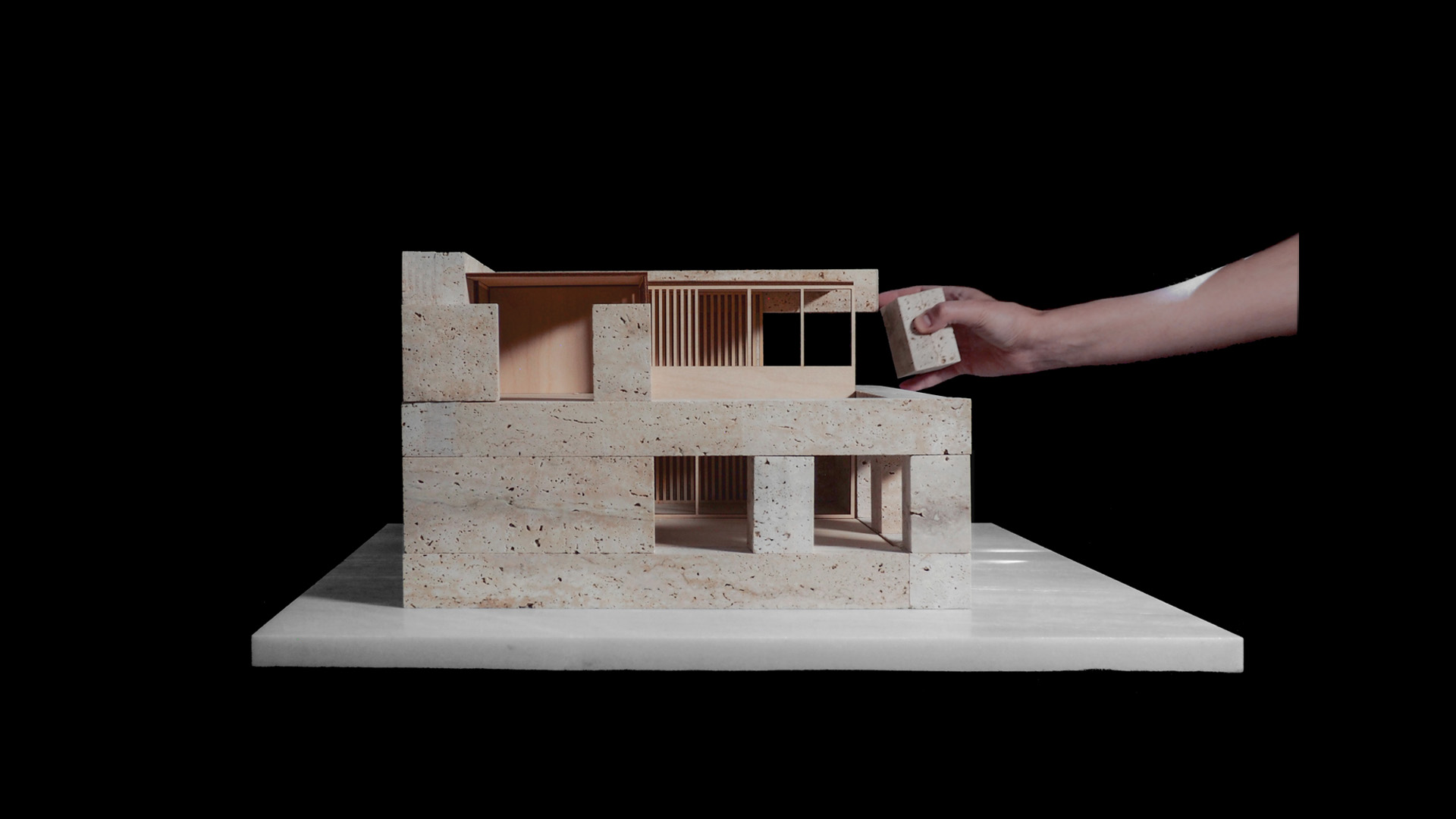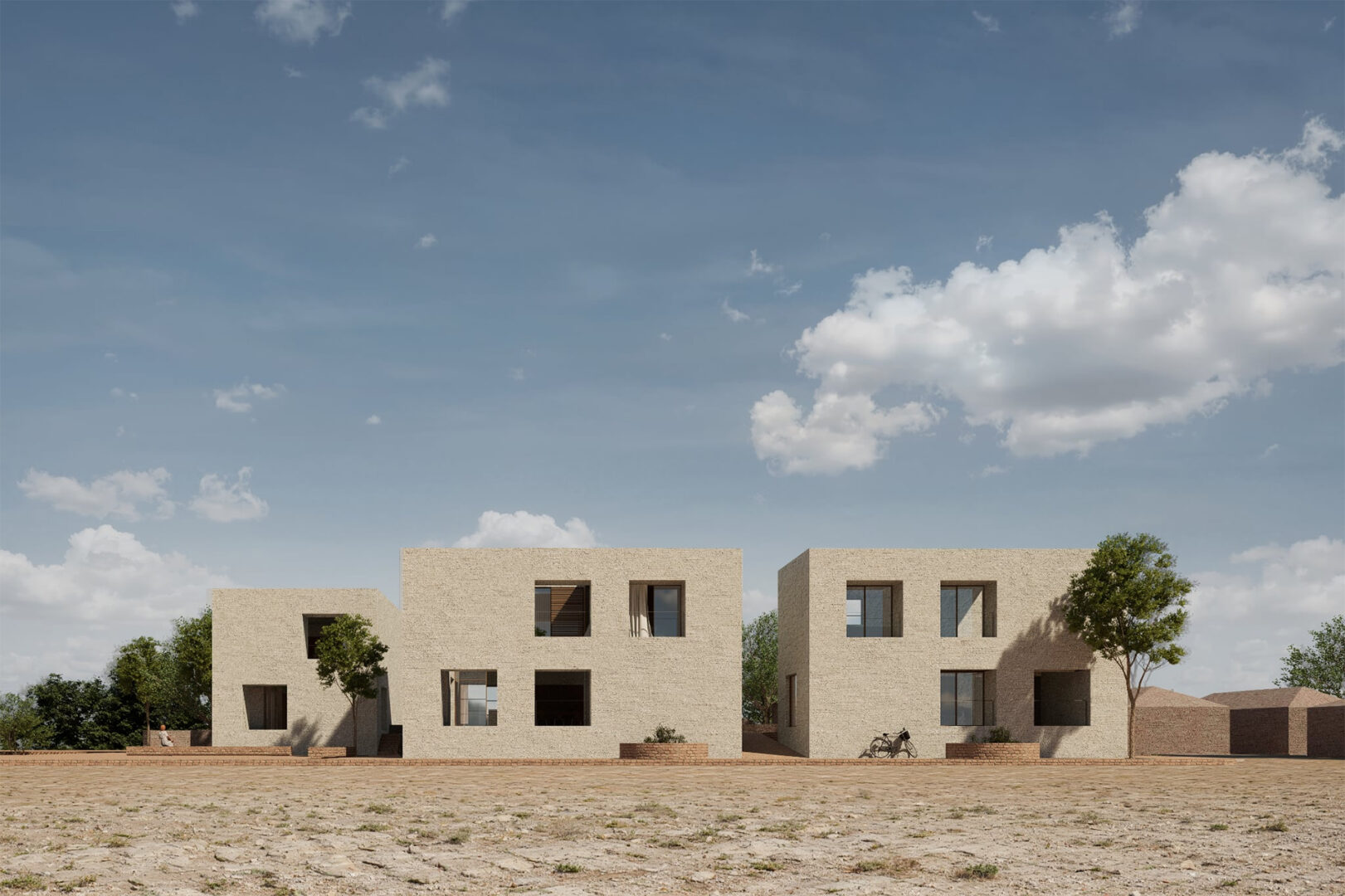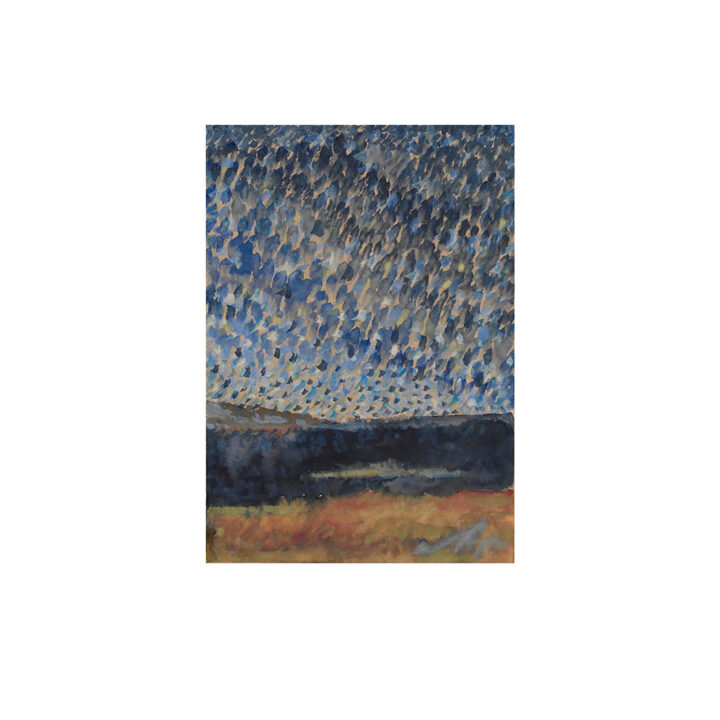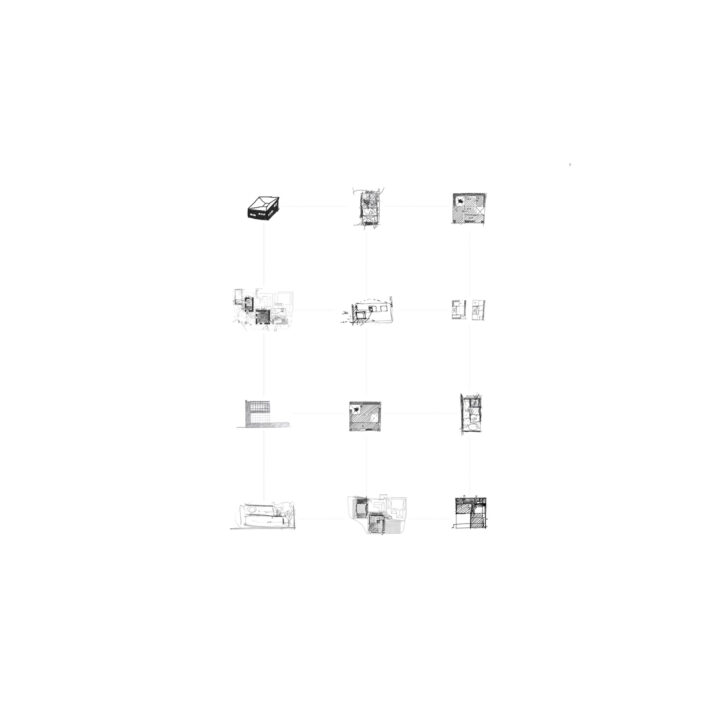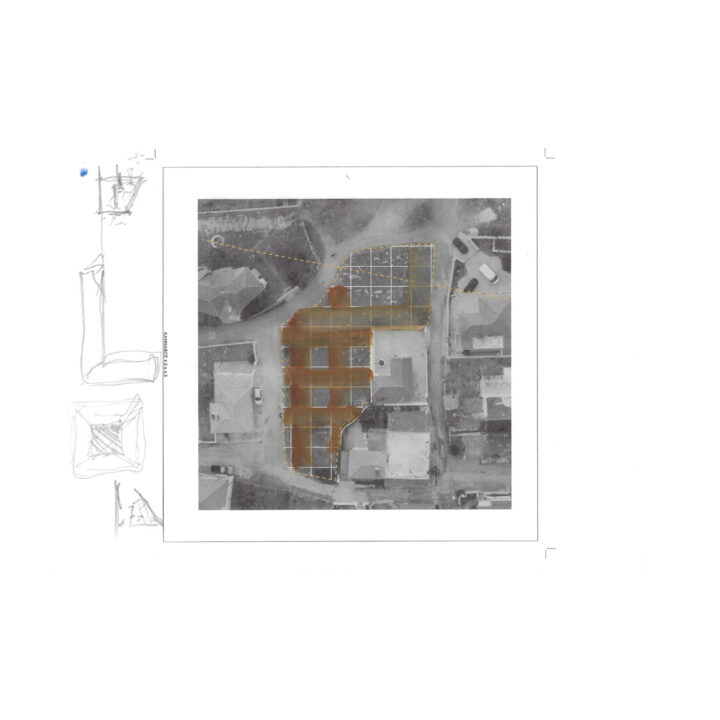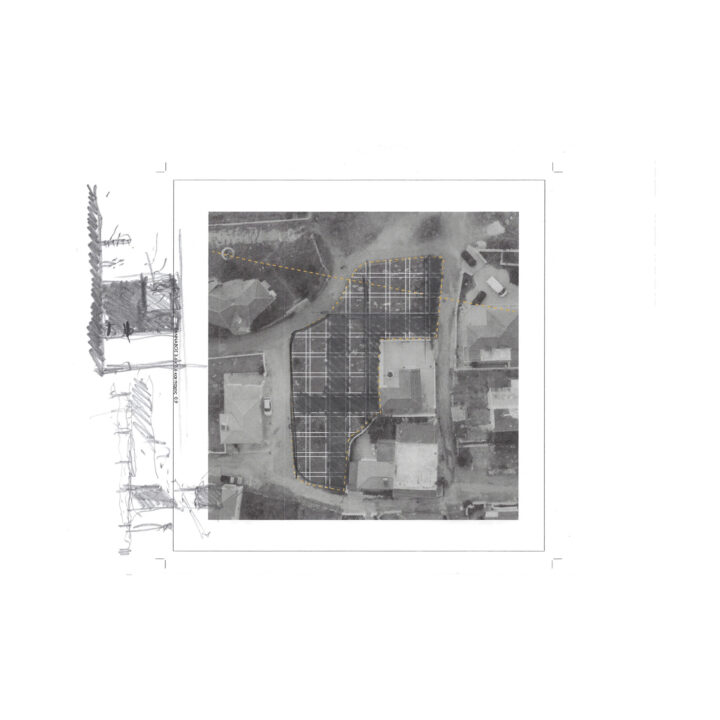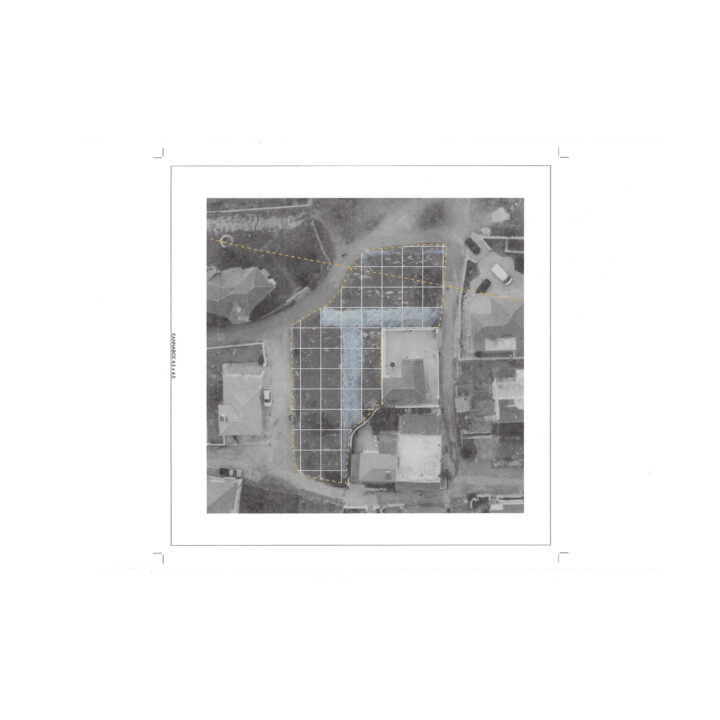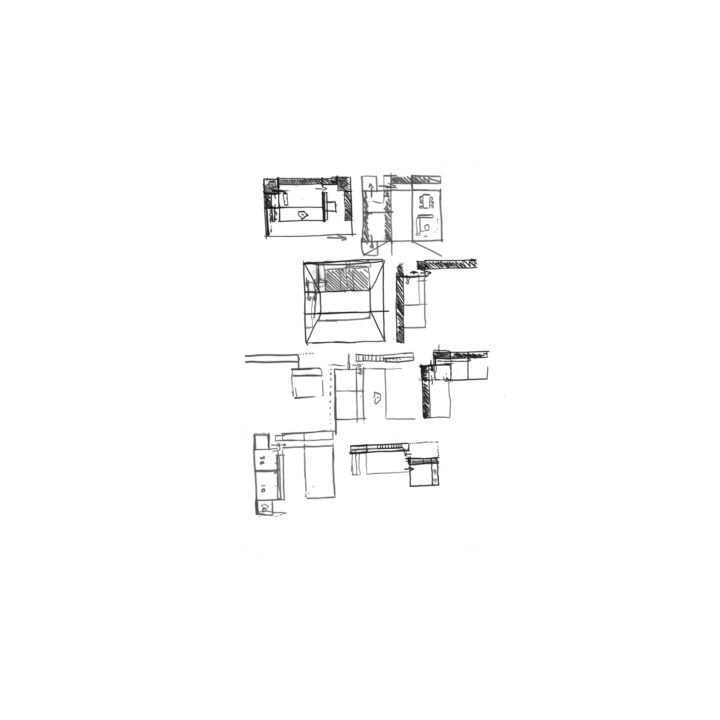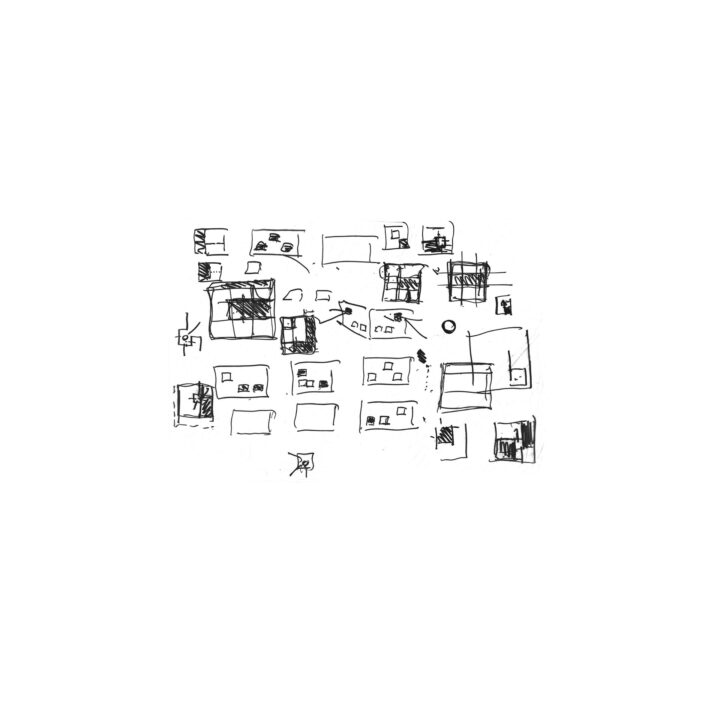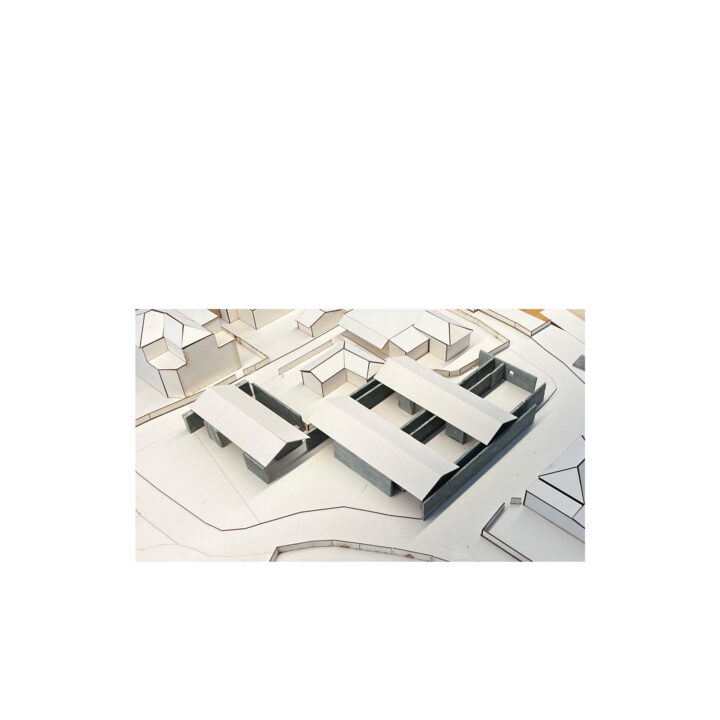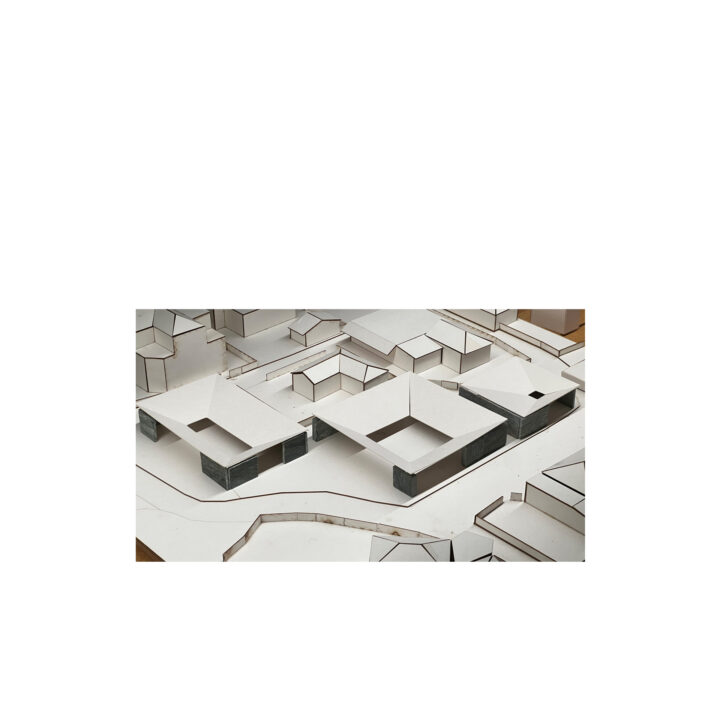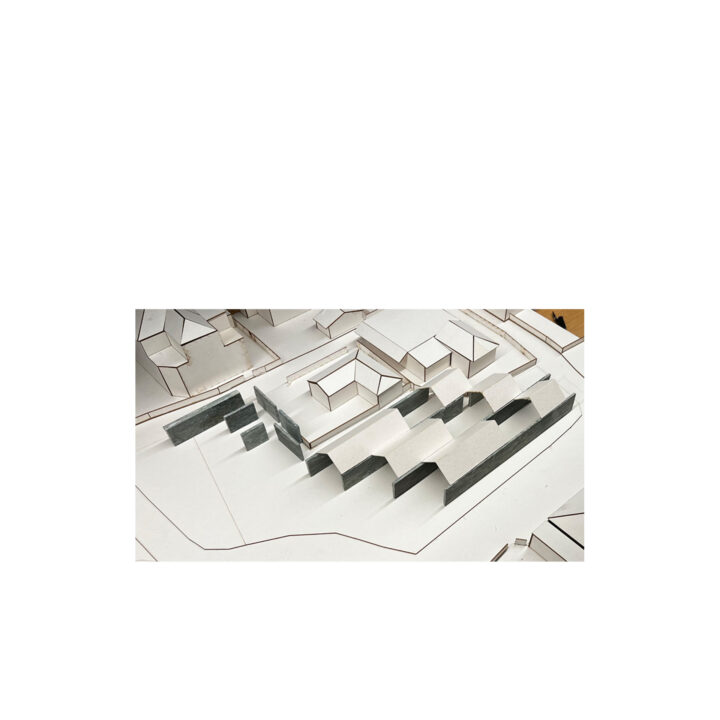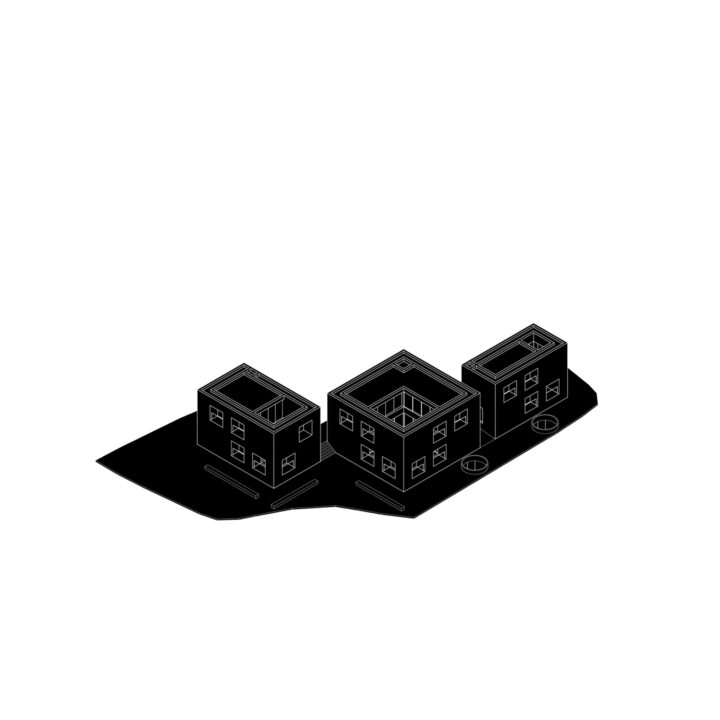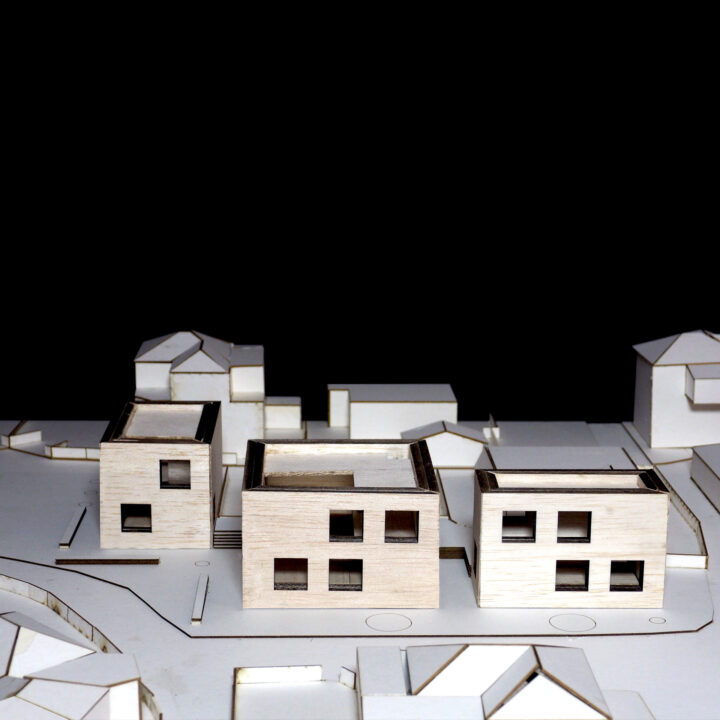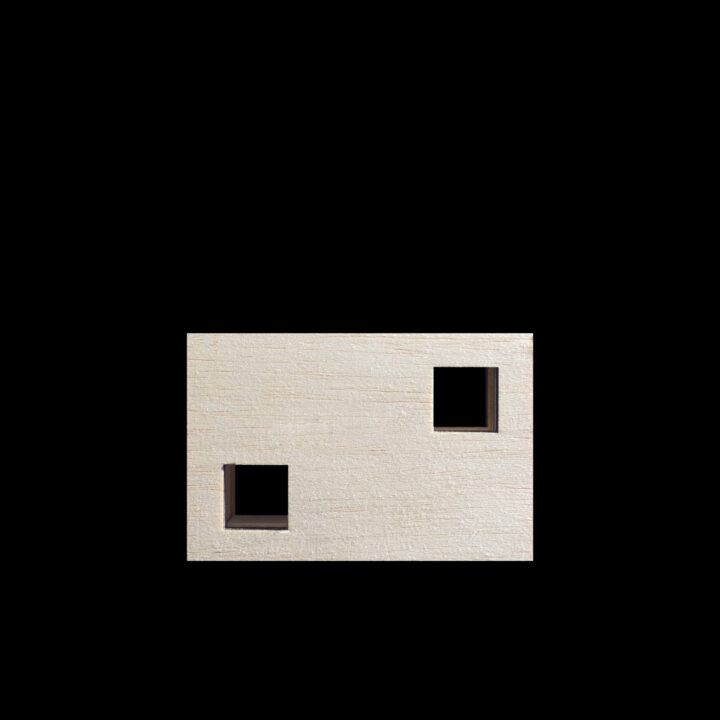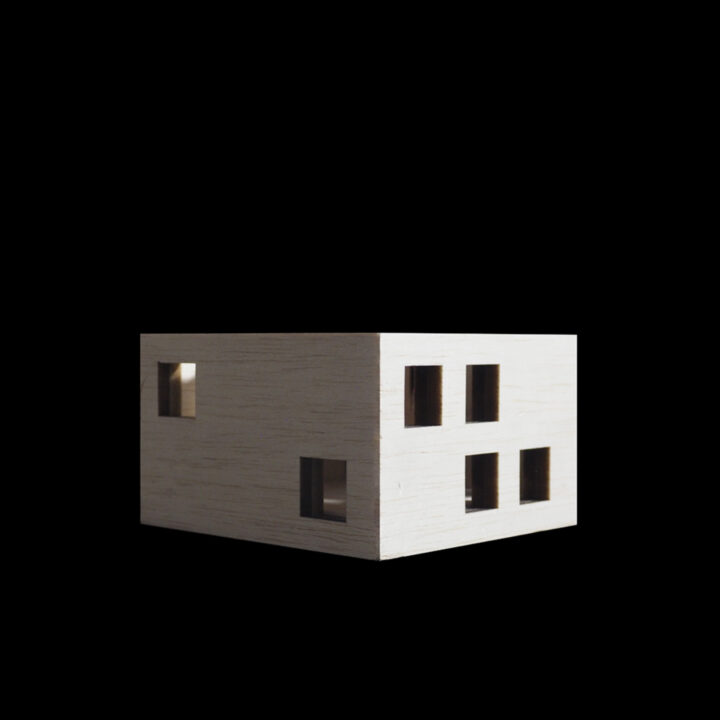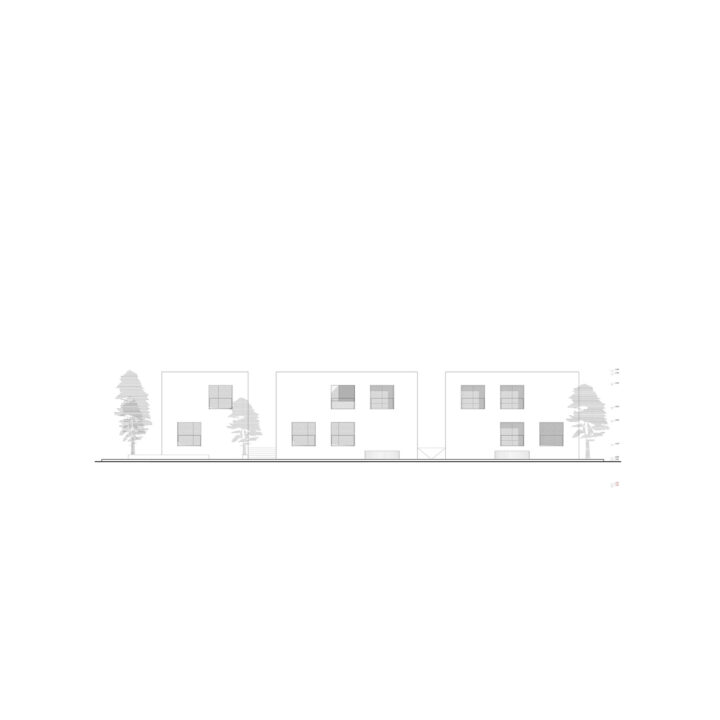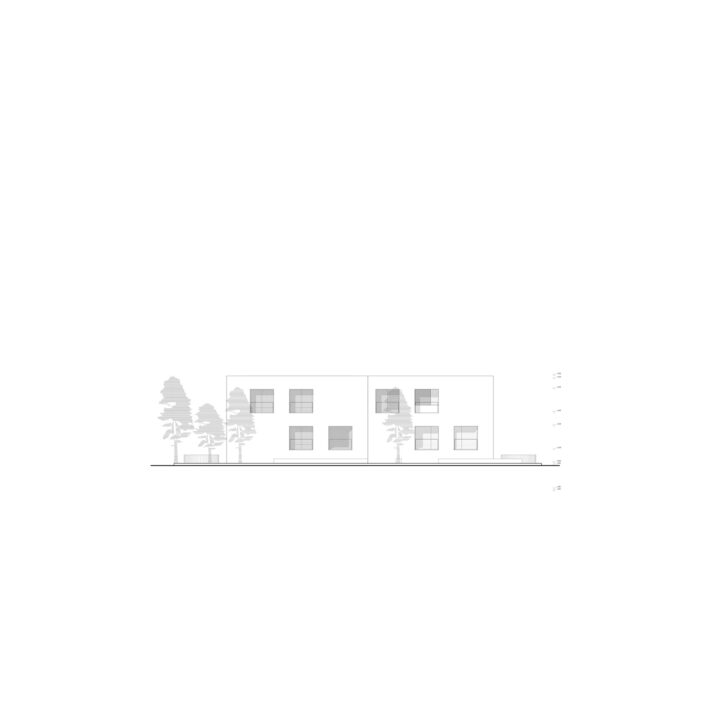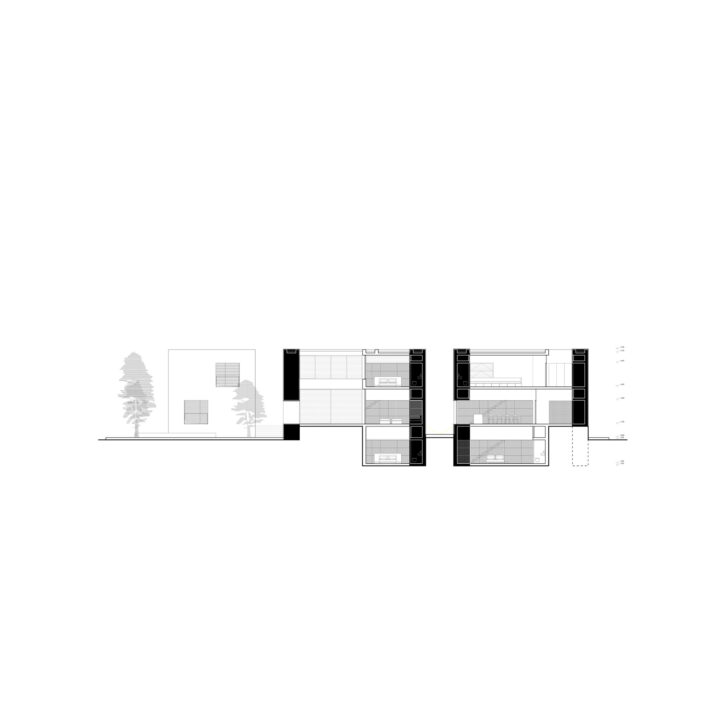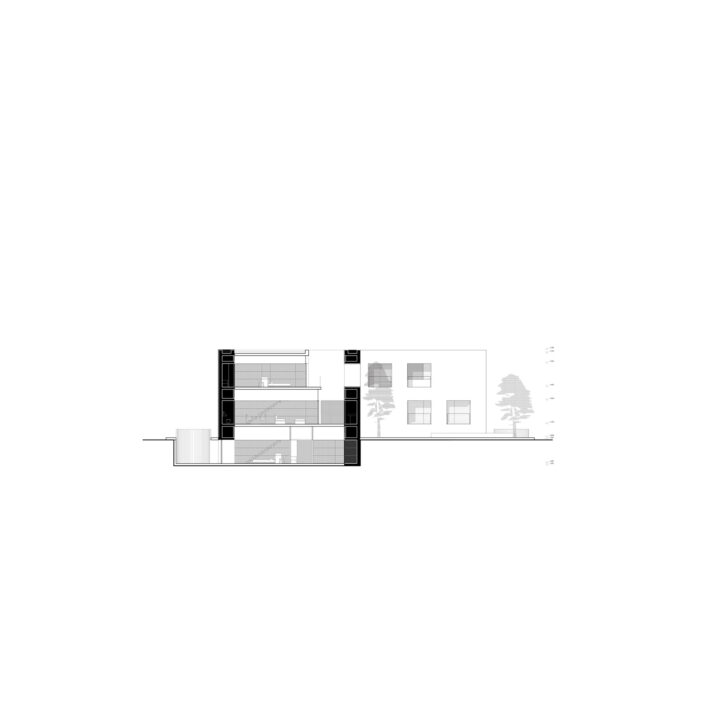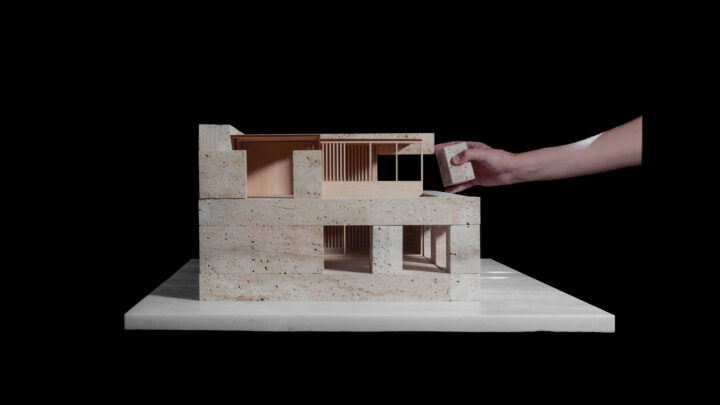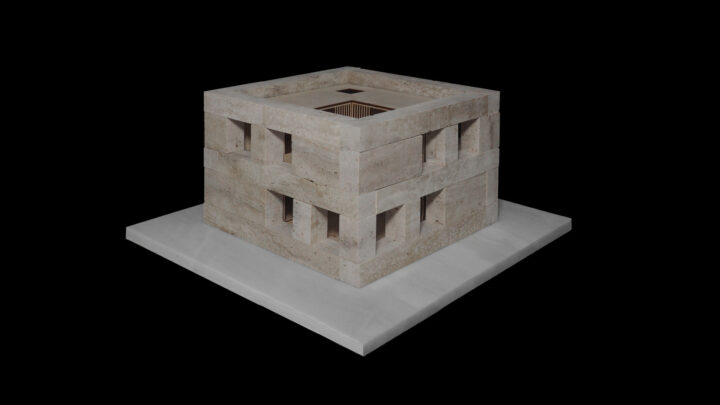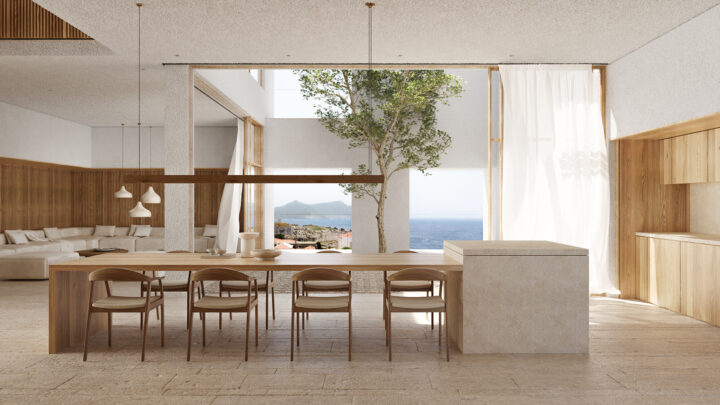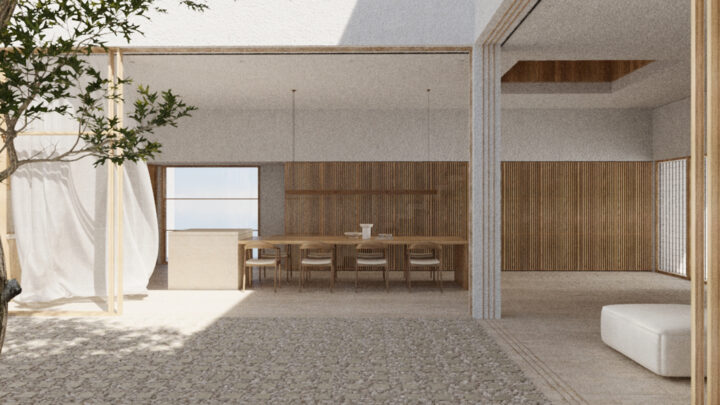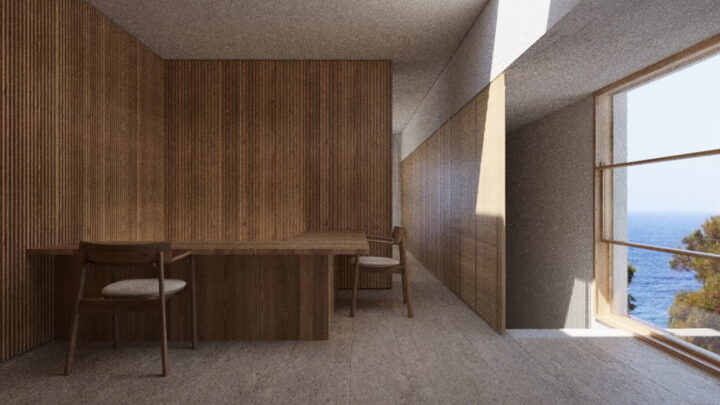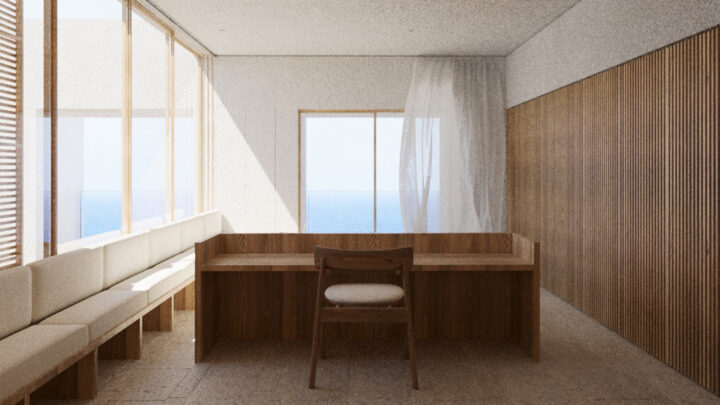This project proposes the construction of three houses for the accommodation of family members. The site is located within a settlement in southern Greece.
The plot occupies a privileged position at the western edge of the settlement. It offers impressive views: towards the Ionian Sea to the west, the medieval castle and the sea to the south, and the historic core and the bay of Methoni to the east. The plot is integrated into the existing urban fabric, has an irregular shape, and three frontages on narrow streets with low traffic. It borders adjacent properties only along its northern edge.
The synthetic process was defined by morphological and planning constraints imposed by local legislation and supervised by the archaeological authority. These constraints limit construction to a specific part of the plot, require setbacks from the streets, and prescribe the form of the houses as solid cubic volumes with small openings, introverted layouts, and local materials.
Thus, the proposed composition is structured around three key synthetic gestures:
- Zoning the site into three distinct areas. This allows each house to develop independently, enhances privacy, and ensures that at least two main views are available for each unit.
- An elevated circulation zone runs along the northern party wall, extending the pedestrian paths of the settlement. It organizes access and enhances daylight and natural ventilation in all living spaces.
- Each house is developed as a vertical unit articulated through the dichotomy of the generic and the specific. The unit is defined by a solid, morphologically controlled perimeter structure (specific), which encloses a flexible, transparent, and translucent Mediterranean living space (generic).
- The perimetric outer shell incorporates regulatory restrictions and houses auxiliary and storage functions. Openings are recessed within the thickness of the walls. They create sheltered balconies that connect the interior to the site and its views.
- The main living spaces are arranged either linearly or in an L shape. They connect to protected outdoor areas (gardens), to which all interior spaces are oriented. They are characterized by slenderness and transparency, directly connected with the protected gardens, and open towards the views through the openings of the outer shell.
This synthesis aims to integrate into the settlement fabric through the introduction of new paths, the typological arrangement of volumes, and strict adherence to local morphological regulations. At the same time, it proposes a model of contemporary Mediterranean living. The outdoor space functions as a structural and functional core, enclosed within a protected yet permeable outer shell.The title “The Inhabited Monoliths” summarizes the main idea. It denotes the coexistence of a unified, solid outer shell, conforming to the strict conditions of the place, with an internal, free, and flexible way of living. The concept of the “monolith” attempts to create a framework activated from within — an architectural act aligned with the collective memory of the place and contemporary daily life.
Architects: P4architecture
Design Team: Alkiviadis Pyliotis, Evangelos Fokialis, Konstantinos Pyliotis, Panayiota Kyriakou
3D Visualization & Interior Design Consultant: Michail Meggios
Civil Engineers Consultants: Skalos EPE (Demetrios Kokas)
Administrative Support Consultant: Katerina Pylioti
Mechanical & Engineering Consultant: KNS Engineers (Konstantinos Sourilas)
Landscape Approach: Chrisi Gkolemi
Architectural Models: Margarita Togia, Doussis Marble (Konstantinos Dousis, Nikolaos Doulos)
Project Type: Residential – Private Commission



